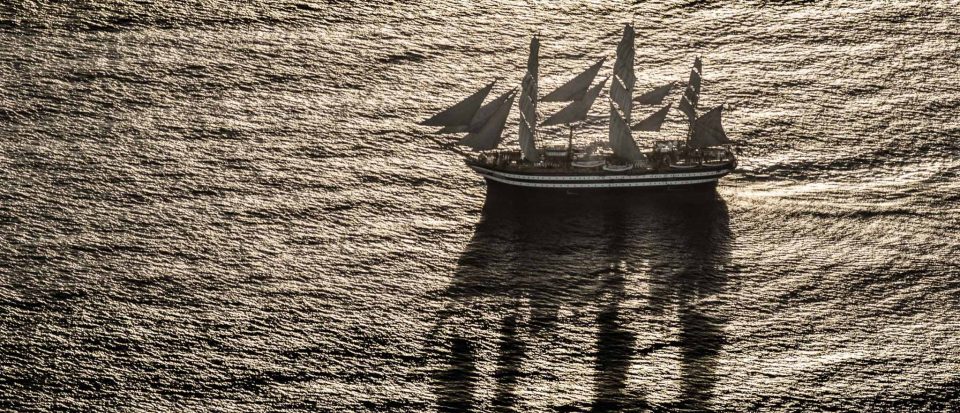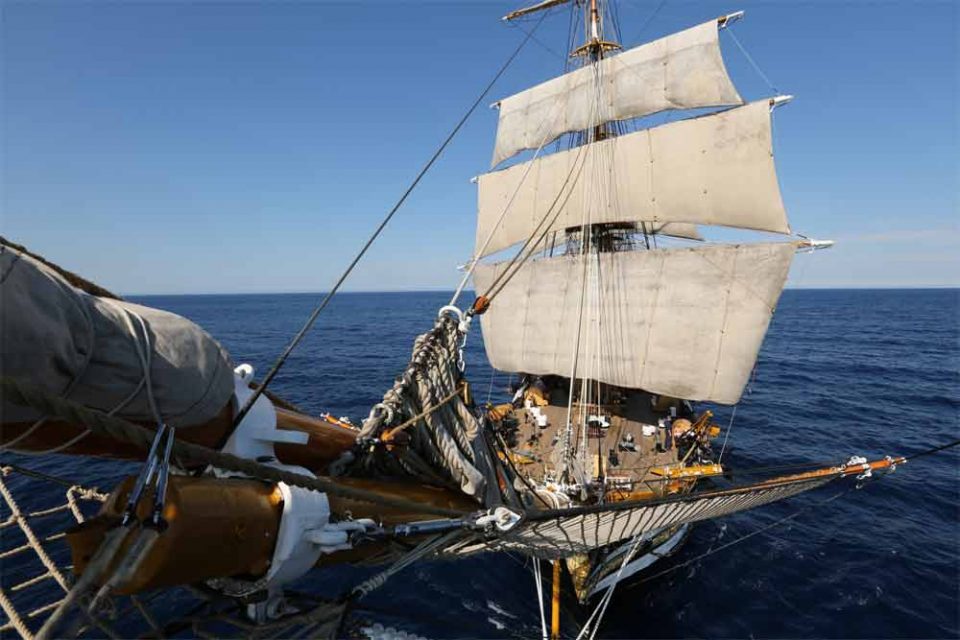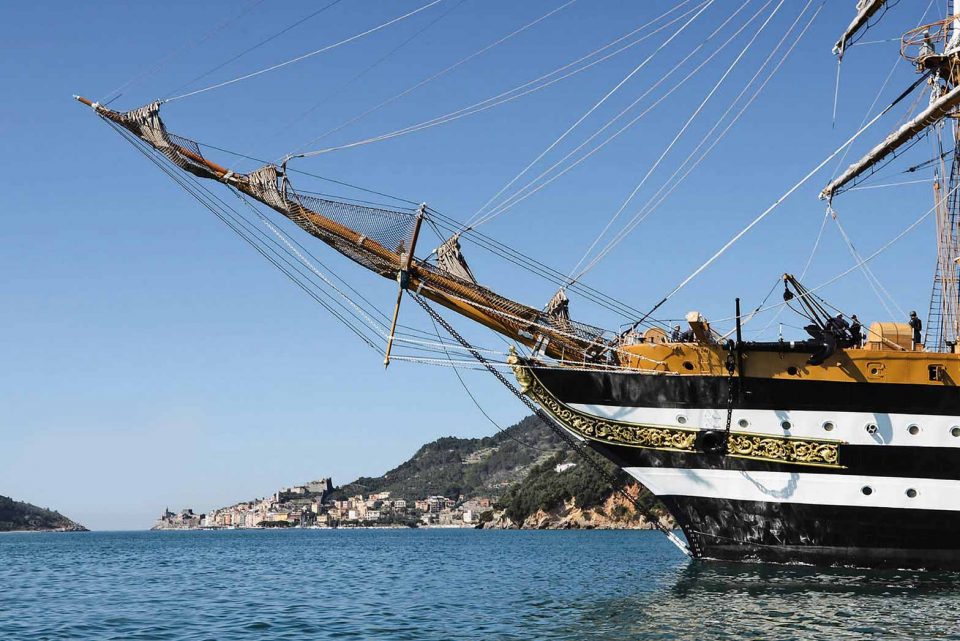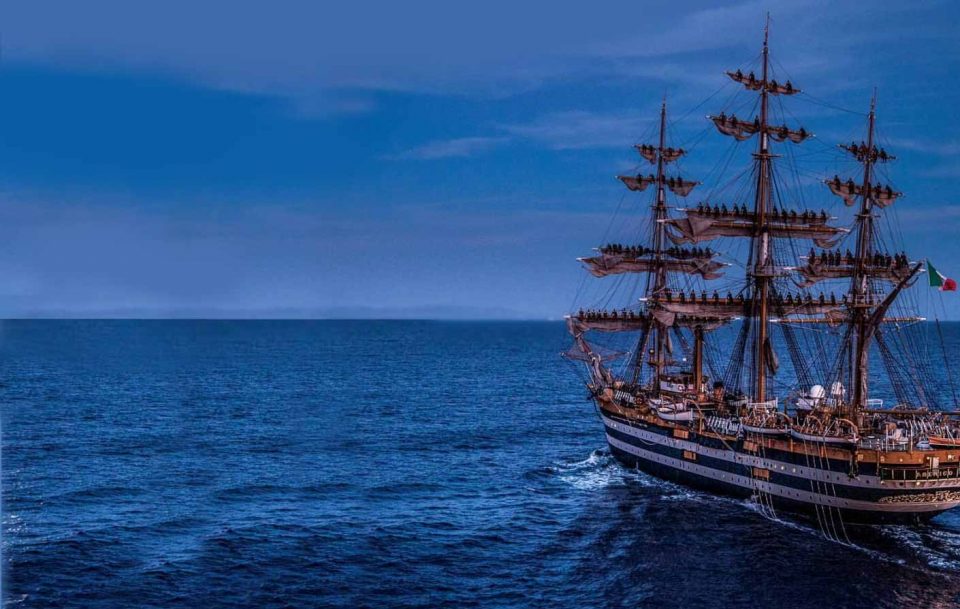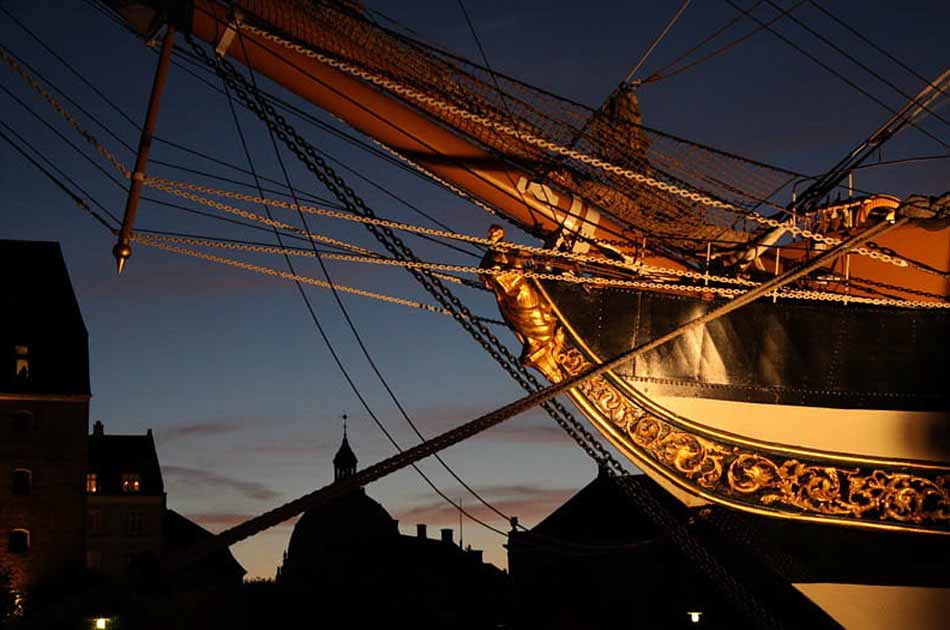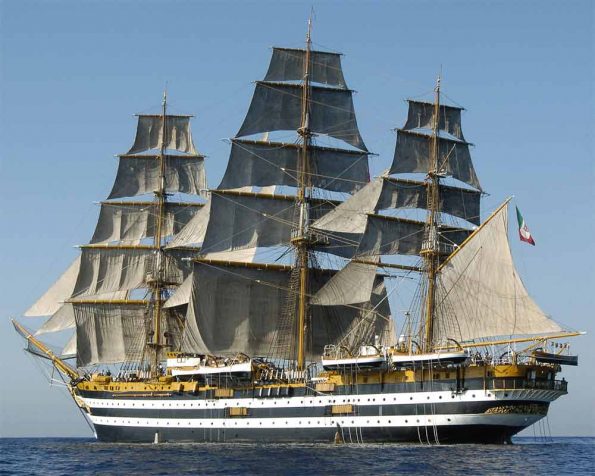L'Amerigo Vespucci is a sailing ship of the Italian Navy, built as a training ship for naval academy cadets.
L'Amerigo Vespucci was built, together with its twin Christopher Columbus (although slightly different in size) in 1930 by engineer Francesco Rotundi, Lieutenant Colonel of the Naval Engineers and director of the Royal Shipyards in Castellammare di Stabia, taking up the designs of the sailing ship Monarchthe flagship of the Royal Navy of the Kingdom of the Two Sicilies, later renamed King Gentleman when it was requisitioned by the Sardinian Navy after the conquest of the Two Sicilies and the subsequent birth of the Kingdom of Italy. The Royal Navy of the Two Sicilies was at the forefront of the pre-unification Italian states and its ships, together with the Sardinian-Piedmontese (or rather Ligurian) ships, formed the first nucleus of the Italian military fleet, as can be seen in the Naval Museum in La Spezia.
The Vespucci was launched on 22 February 1931 in Castellammare di Stabia. She left fully fitted out on 2 July for Genoa where, on 15 October 1931, she received the combat flag in the hands of her first commander, Augusto Radicati di Marmorito. Its task was to flank the Christopher Columbus in training activities, and was placed in the School Ship Division together with the Colombo and another smaller ship.
The training takes place through instruction cruises, which have already been carried out 71 times, with different itineraries; in particular, the Vespucci has visited Northern Europe 37 times, 20 times in the Mediterranean, 4 times in the East Atlantic, 7 times in North America, 1 time in South America and 1 time circumnavigating the globe.
In addition to training, particularly in the last decade, it has often acted as an ambassador on the sea of Italian art, culture and engineering, appearing in many of the world's most important ports on special occasions such as in Auckland (New Zealand) in October 2002 on the occasion of the 31st America's Cup and more recently in Athens in 2004 for the Olympics and in Portsmouth in 2005 for the commemoration of the Battle of Trafalgar where it played a leading role.
It is a sailing ship that keeps the old traditions alive. Its 26 sails are still made of Olona canvas, the tops are all still made of vegetable material, and all manoeuvres are strictly carried out by hand; every order on board is given by the captain, through the boatswain, with the whistle; the embarkation and disembarkation of an officer takes place with honours at the barcarizzo (the opening in the parapet of a ship, through which the deck is accessed from the outside, by means of a ladder or gangway) depending on the rank of the guest.
On the occasion of the 1960 Rome Olympics theAmerigo Vespucci transported the Olympic flame by sea from Piraeus to Syracuse. Memorable was the encounter in the Mediterranean with the US aircraft carrier USS Independencein 1962, which flashed the beacon: 'Who are you?', to which was replied: 'Training ship Amerigo Vespucci, Italian Navy'. The US ship retorted: 'You are the most beautiful ship in the world'.

